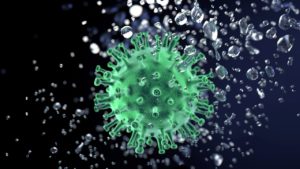 Below are some examples of problem water commonly found in the Hudson Valley. Different problems in the water, or combination of problems, all have unique water filter needs.
Below are some examples of problem water commonly found in the Hudson Valley. Different problems in the water, or combination of problems, all have unique water filter needs.
Coliform Bacteria: The most common and important thing to test frequently, as indicated by all regulating organizations such as DEH, CDC, and EPA. Coliform bacteria are found in the digestive systems of animals, in soil and on plants. They don't typically make people sick, but having a high total coliform count in water is an indication of the presence of things much harder to test for like viruses, bacteria, and parasites. Some symptoms include fatigue, diarrhea, vomiting, cramps, nausea, headaches, and fever. Fecal coliform bacteria (E. coli) are a specific kind of total coliform. And yes, as the name suggests, that means feces has found its way to your water.
Sulfur, Hydrogen Sulfide: That distinct rotten-egg smell. Too much sulfur in drinking water can cause diarrhea and dehydration. Sulfates (a combination of oxygen and sulfur) can cause scale buildup and damage to water pipes similar to other minerals. It can stain sinks, toilets, and clothing. Can be flammable and poisonous at extreme levels. Sulfur bacteria produces a slime and can promote the growth of other bacteria (such as iron bacteria).
Hardness: Hard water is a high amount of calcium, magnesium and other minerals. Problems caused by hardness in the water include scale and stubborn deposits, clogged water pipes (and low water pressure from that), water heater damage, scummy residue, laundry issues, and itchy, dry skin. Hard water is removed with a softener.
Nitrate/Nitrite: A contaminant that can affect how blood carries oxygen and is particularly dangerous for bottle-fed babies under six months. Shallow wells are most vulnerable to nitrate contamination.
TDS/Total Dissolved Solids: Represents the total concentration of dissolved substances in water. TDS is made up of inorganic salts, as well as a small amount of organic matter. This usually is calcium, magnesium, sodium, potassium cation and carbonate, hydrogen carbonate, chloride, sulfate, and nitrate anions. The presence of high TDS (and also extremely low concentrations of TDS) can often effect the taste of drinking water.
Iron: Can cause a disagreeable metallic taste, reddish-brown stubborn stains on fixtures, dishes and clothes, rusty deposits in water, and when present with certain bacteria, leaves a smelly reddish-brown or yellow slime that can clog plumbing and appliances.
Lead: A poisonous metal that can cause long-term health and behavioral problems and is most dangerous to young children. Hence why NYS law requires all children to be tested for lead at one year and two years old, and assessed for exposure until age six.
Acidic Water ( Low pH): pH stands for "potential of Hydrogen" which means the amount of hydrogen detected. It is measured on a scale of that runs from 0-14. Seven is neutral, below seven means it is acidic and above seven it is basic (alkaline). Acidic water can damage pipes and fixtures by leaching metals such as copper, lead and zinc. It can also leave a metallic or sour taste, laundry staining, and blue-green stains in sinks and drains.
Alkaline Water (high pH): Can cause a baking soda taste, scale buildup (which also lowers efficiency of appliances like water heaters), and chalky white staining.
Colloidal Clay: Sized less than one micron and microscopically dispersed. Because of this extremely small size, colloidal clay will not settle; it stays suspended in the water. This can be a problem for many types of water treatment systems that can not stop a particle that small. However, AquaCare has highly efficient choices for removing colloidal clay.
Manganese: Can cause a bitter taste, reddish-brown color, odor, and black stains on fixtures and clothing. At high levels and prolonged periods, has been associated with toxicity to the nervous system, producing a syndrome that resembles Parkinsonism. It is especially important that drinking water for pregnant woman, young children, and the elderly be below the recommended levels.
Chlorine: Highly efficient at killing bacteria, and so still the top choice for disinfecting municipal water. However, unlike well water chlorination systems that don't pass through high levels of chlorine into the drinking water, public water can commonly have levels of chlorine that effect the taste and odor. While residents with public water don't have to monitor many of these other problems, they often still call us to remove the chlorine.
Methane: A gas (CH4) that can occur naturally in water due to decomposition of vegetation or other organic material mixed in with sediments. Though rarely, it can indicate contaminants in the well so it is recommended that those wells that are positive for methane also have further testing for other contaminants. Concentrations of methane in water of as little as 1 mg/L can lead to explosive levels if the gas accumulates. Despite being colorless, tasteless, and odorless. methane can still have some signs. A sputtering faucet, a gurgling noise from the well, or banging of water pipes are three indications of methane or other dissolved gases.
Chemical Contamination: Chemicals such volatile organic chemicals (VOCs) and synthetic organic chemicals (SOCs) can get into well water, for example, by pesticides, chemical spills, and household chemicals disposed down drains and toilets. If you suspect chemical contamination, stop drinking the water until a water test can be completed.
Click below to find detailed information on the EPA national drinking water standards. We would be happy to discuss with you the typical water treatment methods for each type of contaminant or get you started with water testing.
